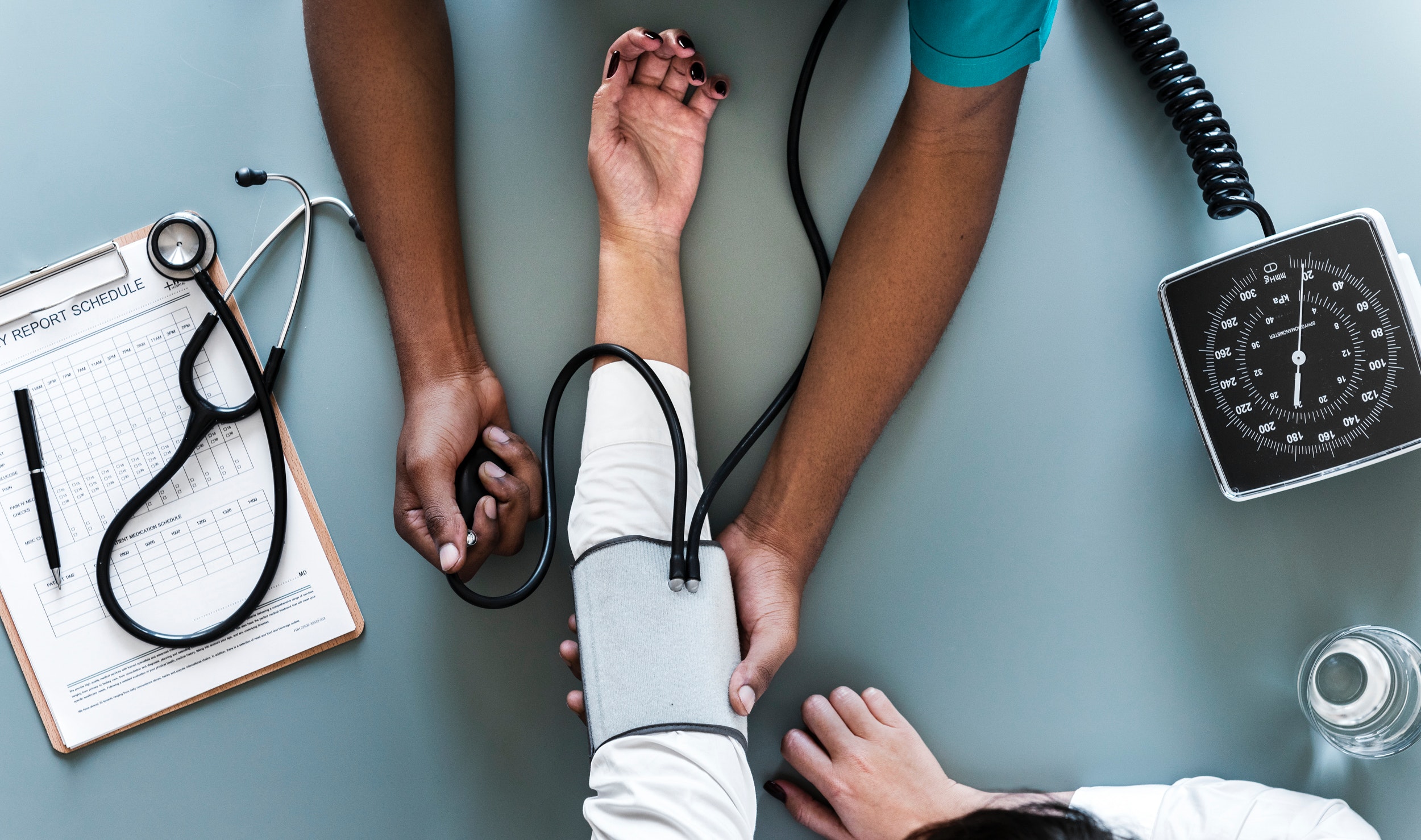Early diagnosis of Parkinson's is becoming possible, but how early do patients want to know?
Each person's disease journey is different, and an early diagnosis is not necessarily a timely diagnosis
MabelAmber on Pixabay
A couple years ago, I was asked to describe my research interests, and, without hesitation, I replied, "Pharmacological fortune-telling." There has always been an appeal in being able to predict the future. But rather than whirling our hands above a crystal ball, scientists known as "disease modelers" use data to predict things like who might develop a disease, what medication they may respond to best, and how their disease will progress.
With some risk factors, people may know if they have a high probability of developing a disease and choose proactive treatment, such as those carrying harmful BRCA1 or BRCA2 mutations connected to breast cancer who opt for a mastectomy. With other conditions, however, such as Parkinson's disease, there are no treatments available that can "modify" the disease, meaning slowing down, stopping, or even reversing it.
Parkinson's is a chronic, progressive neurodegenerative disorder associated with the loss of dopamine-producing cells in a part of the brain called the substantia nigra. When 60-80% of these neurons die, people begin to experience 'motor' symptoms, namely tremors (shaking), slowed movement, rigidity, and difficulty with balance. In addition to the motor symptoms, people with Parkinson's also experience numerous non-motor symptoms (not related to movement), including depression, constipation, and problems with learning and memory, some of which can appear years, and even decades, prior to diagnosis. With the loss of that many brain cells at the diagnosis stage, some Parkinson's researchers believe targeting the period before diagnosis, known as "prodromal" Parkinson's, will be key for testing disease-modifying treatments.
A task force convened by the International Parkinson and Movement Disorder Society (MDS) has now developed updated research criteria for the likelihood of having prodromal Parkinson's (also called pre-Parkinson's). Since it is not possible to truly know if someone has prodromal Parkinson's until they become diagnosed with the disease later on, these research criteria are based on probability that a person with X symptom actually has Parkinson's disease. The model is based on the presence or absence of factors like constipation, anxiety, inability to smell, smoking, and sleep disturbances.
But when people hear these symptoms, they almost always ask, “I get constipated and have anxiety. Does that mean I’ll have Parkinson’s one day?” Well, not quite.
Each of these risk factors in the updated model was assigned a "likelihood ratio" — the likelihood that a certain result would be expected in someone with the condition, compared to the likelihood that it is expected in someone without the condition. For example, males are more likely to develop Parkinson's than females, so male sex was assigned a likelihood ratio of 1.2. Regular pesticide exposure has a likelihood ratio of 1.5, and constipation is 2.5.

Researchers have developed a model for how likely it is that a person has Parkinson's disease, based on their symptoms.
Rawpixel.com on Pexels
The item with the highest likelihood ratio? Polysomnogram-proven REM Sleep Behavior Disorder, with a likelihood ratio of a whopping 130. During REM sleep, our brains prevent movement, so we do not act out our vivid dreams, but in REM Sleep Behavior Disorder, this process is disrupted. In fact, when actor Alan Alda came out with his Parkinson's diagnosis, he shared he felt he may have Parkinson’s because he threw a pillow at his wife while dreaming about throwing a sack of potatoes.
As scientists better understand Parkinson's and prodromal Parkinson's, the definitions and diagnostic criteria improve, but there is still currently no cure. While no drugs exist that can alter the course of the disease, there are numerous treatments available to provide relief from the motor and non-motor symptoms.
A 2018 article by a group of researchers at University College London and Queen Mary University of London made a differentiation between an early diagnosis and timely diagnosis. A timely diagnosis "is tailored to the individual, their priorities, their social environment, and the therapeutic and health-system options in which they live," the article authors write. And in my own conversations with people who have Parkinson's, the range in responses about whether they would have wanted an earlier diagnosis shows just how personal this decision can be.
What about the post-diagnosis aspects of Parkinson's disease modelers are trying to predict? More modern, "big data" approaches may allow us to identify things we may have not have not known before, like discovering whether the use of certain medications is protective or harmful, or predicting when someone might become unable to live independently. For these outcomes, I have also heard a range of responses. Some want to know how certain conditions they have are affecting their Parkinson's; others do not want to know any of it.

Actor Alan Alda has been open about his Parkinson's diagnosis
These issues are not unique to Parkinson's, as many are seeking to predict similar outcomes in other conditions that currently have no cure such as ALS and Alzheimer's disease. As researchers (myself included) continue the quest to predict various disease-related outcomes, we should keep in mind the people most affected by these conditions, what is meaningful to them, and what guidance and options we can provide that will help them with the daily fight against this disease.
Peer Commentary
Feedback and follow-up from other members of our community
Rebecca Muir
Genetics
University College London
Thanks for writing this article Monica! As your article discusses, the timing of when a patient might want to know about a diagnosis is extremely personal. With the rise of data-driven neuroscience, the ethical dilemma of when to reveal a diagnosis will only become more relevant to our lives. Your article also shows that we need to prioritize talking to patients when putting together policies and guidance, and not just consider their risk scores.
Kamila Kourbanova
Neuroscience, Molecular Biology
Johns Hopkins University
Besides understanding how something works, the objective of clinical researchers is how can we prevent this specific pathology? As Monica highlights in the article, it is pertinent to understand the risk factors that contribute to Parkinson’s Disease and to use these factors as a trail of breadcrumbs. Sleep is an interesting indicator of PD-likelihood…there are multiple neuronal populations responsible for sleep. REM sleep is a stage in-between deep sleep and wakefulness. Of the three brainstem nuclei with reduced activity in non-REM sleep, only the cholinergic nuclei of the pons-midbrain junction are active during REM sleep. If this activity is decreased, an individual cannot enter REM sleep. The cholinergic neurons communicate with higher-order cortical regions to create the high discharge rates we see on the EEG of REM sleep [10.1152/physrev.00032.2011]. As so many brain circuits are connected, it’s easy to see how any disruption in one circuit affects a homeostatically-balanced behavior such as sleep. Another article from McGill University in Canada [10.3233/JPD-150725] emphasizes how environmental and behavioral risk factors for RBD actually overlap significantly with those for Parkinson’s Disease. Patients with RBD were more likely to have fewer years of education, were smokers, used antidepressants, and relied heavily on alcohol. This trail of breadcrumbs allows us to craft together a more predictable risk value but this still doesn’t account for spontaneous changes in biology. If an individual has a history of familial PD and exhibits all the risks factors + RBD, we can assume they will have a high probability of developing PD…but is it possible they could be on the lucky side of the likelihood ratio?
Alejandra Canales
Neuroscience, Biochemistry
University of Wisconsin - Madison
Great article! It’s not mentioned nearly enough that the conversation about whether we can accurately predict risk for disease is separate from the one about how this information helps patients. Additionally, since the research on genetic risk factors for complex disease is ongoing, these risk scores themselves can change with more available data. For example, this story describes one family’s unfortunate experience dealing with the knowledge that many carried a pathogenic BRCA mutation–only to later find out that that mutation had been reclassified as a variant of unknown significance.
Katherine Basil
Neuroscience
Maastricht University
Great article Monica!
It is a great point you raise about what can we do with early prediction of diseases that we currently have no cure for. What I would like to add though, is that tests that are only looking at genetic vulnerability, alone, only explain a very small percentage of disease risk. It is becoming more and more obvious that epigenetics, environmental exposures, lifestyle, etc., all together can make a better estimate of risk of a certain disease.
And this discussion is more and more relevant now and today than it was years ago, due to the emergence of genetic testing consumer companies like 23andMe. The validity of these tests, and the quality of genetic counseling that these companies offer are not regulated by medical regulatory bodies, which raises several (ethical) questions.